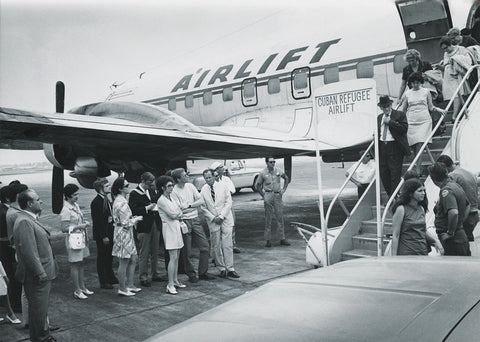
There was a Time When the US and Cuba Worked Together To Ferry Refugees to America
Fidel Castro’s Communist takeover of Cuba ushered in a period of conflict and tension with the United States that has lasted ever since the 1959 revolution. Tucked amid the saber-rattling was the Freedom Flight program of 1965-73, a rare example of cooperation between the two belligerent states.
After coming to power in Cuba, Castro began aligning himself with the Soviet Union and its repressive version of Communism, prompting many well-off Cubans to leave the island. As Castro seized more private property, the middle class began leaving, too. At first, Castro welcomed ridding the island of those opposed to his political philosophy. In September 1965, he announced that Cubans wishing to join their families in the U.S. (except males of military age) could leave by boat, kicking off the massive Camarioca Boatlift and, along with it, a humanitarian crisis. That led to the Freedom Flight program, for which Pan American World Airways was commissioned to fly two flights a day, five days a week to bring eligible Cubans to the United States. The first flight lifted off from Varadero Airport, near Matanzas, on December 1, 1965.
The program proved extremely popular in Cuba, with waitlists of up to two years—despite Castro’s pointed attempts to harass and shame those who wanted to leave. As it became apparent that Freedom Flights were exacerbating a Cuban brain drain, Castro grew wary. He suspended flights for six months in 1972 before halting the program altogether in 1973. By then nearly 300,000 Cubans had escaped the island for American shores. The last Freedom Flight touched down in Miami on April 6, 1973—50 years ago this spring.
